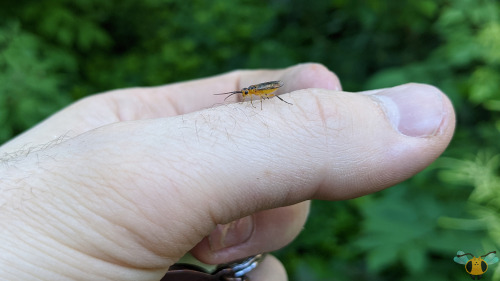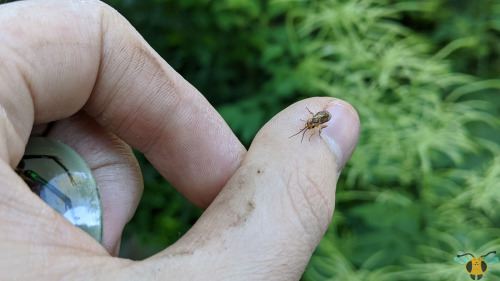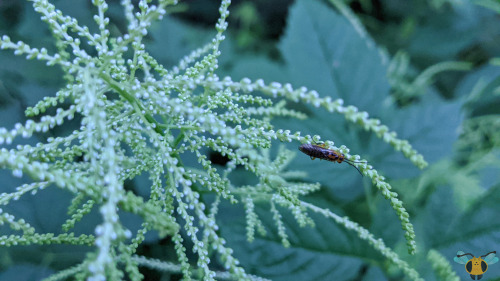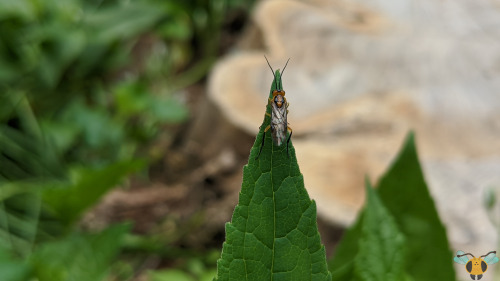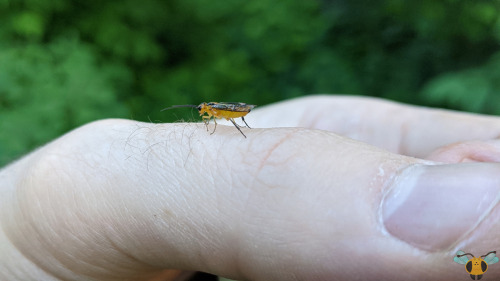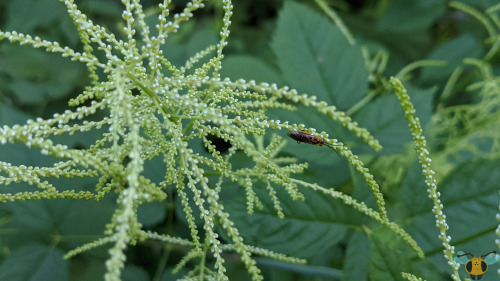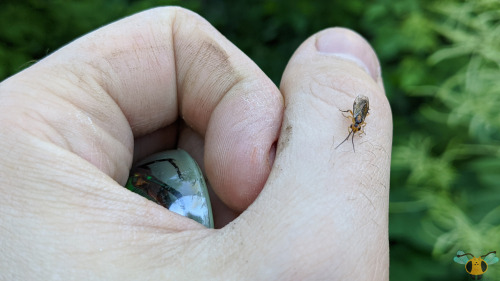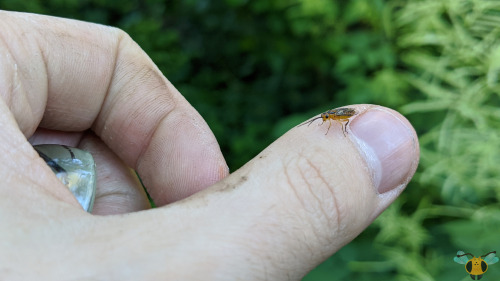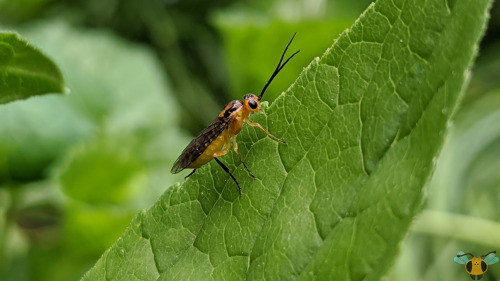Locust Sawfly - Nematus tibialisWhile researching more into this curious specie of insect, I primari
Locust Sawfly - Nematus tibialisWhile researching more into this curious specie of insect, I primarily focused on its larvae since they aren’t seen in these pictures. While I hope to find some in the future, it’s unlikely it will happen in my own backyard since we had to remove our black locust tree. Wild trees will have to do the job, but it’s most likely that they’ll be in the tree’s upper branches where leaves are plentiful. That’s their plan away as the eggs are placed directly into the leaves of the locust tree via the female’s saw-shaped ovipositor. From the images I’ve seen, its an effective incision that has the egg resembling a blemish on the leaf: a perfect disguise! After hatching, the larvae can feed together on the many tree leaves and grow until time to hide in preparation for the upcoming winter. There’s little information to find on where exactly they go and what stage of development they do so. It’s possible they crawl beneath the bark of the host tree or fall into the soil and pupate, but not in every case. Some Sawflies actually begin to retreat away while still larvae while others may overwinter as eggs. In the case of this specie, rotten wood probably wouldn’t be on the table since they attack healthy trees. Consume may be a better word choice than attack, as they are harmless otherwise and can be handled safer than other Hymenopterans.Looking at the adults with their bright color palette, it’s tempting to imagine the larvae have a similar bright color. That’s partially correct as the larvae’s head becomes more bright orange as it grows, while the body remains a bright green with specks of black markings. That last observation is important as depending on the location, other Sawflies can actually use the black locust tree as the host. One relative in particular kept popping up on my search: Nematus abbotii - no common name. The two Sawflies have had their larvae mistaken for each other, but it seems they can be told apart by the prominence of the dark body patterns. The latter’s are more prominent. Of course, they’re simple to tell apart in adulthood as N. tibialis is orange with black highlights and N. abbotii is black with orange highlights (in different places) and an elongated form. I’ve wondered if they compete with each other where their ranges overlap. I’m not likely to find out since the latter is confined to the United States, but I’ll try and make the most of the Locust Sawflies we have in Canada. With how quickly their trees spread, they have many hosts to pick. Perhaps I can catch them this year under the assumption that if the adults emerge in spring, the larvae may be found in the summer. Hopefully the future holds many fantastic insect surprises. I mean, if I can find a Pigeon Horntail, anything is possible!Pictures were taken on May 30 and June 14, 2020 with a Google Pixel 4. -- source link
Tumblr Blog : jonnysinsectcatalogue.tumblr.com
#ontario insect#sawfly#locust sawfly#hymenoptera#insect#toronto#may2020#june2020
